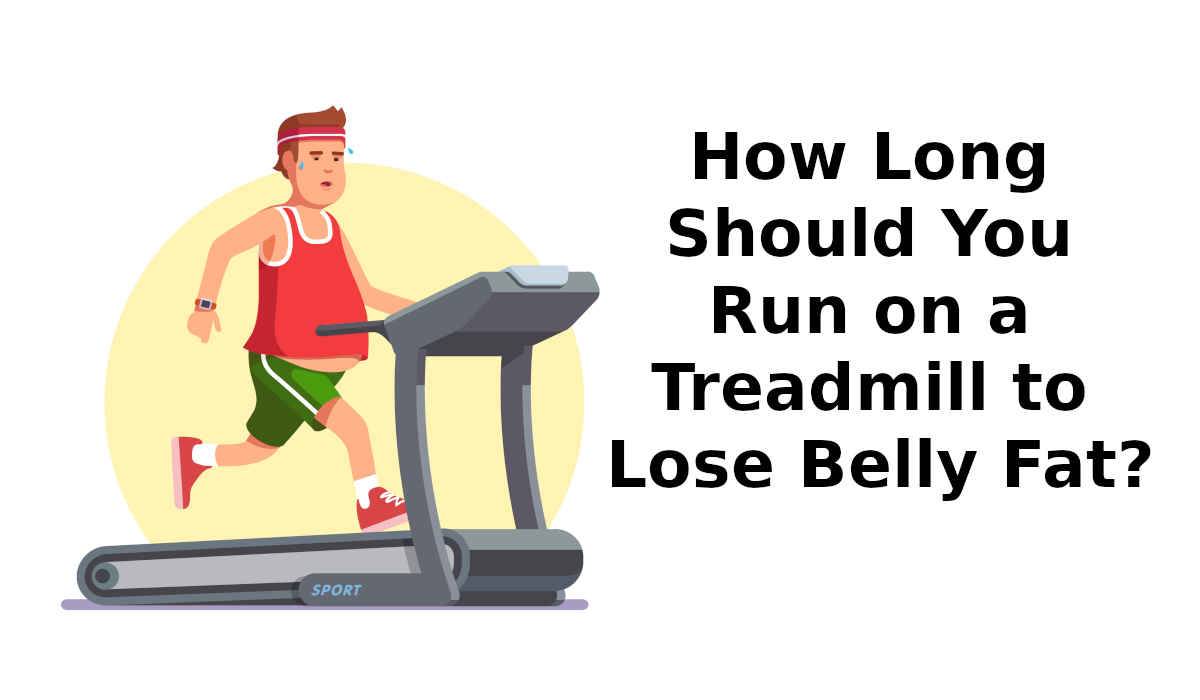Will I Lose Belly Fat By Running

The quest to shed unwanted belly fat is a fitness goal pursued by millions. Promises of quick fixes and miracle cures flood the market, but one enduring question remains: Can simply running help you lose that stubborn abdominal fat?
While running can contribute to overall weight loss, its effectiveness as a sole solution for reducing belly fat is a more nuanced issue. This article delves into the science behind fat loss, the role of running in that process, and the lifestyle factors that ultimately determine success.
The Science of Fat Loss
Fat loss, at its core, is about creating a caloric deficit. You need to burn more calories than you consume.
This deficit forces the body to tap into its energy reserves, primarily stored fat.
However, the location from which the body draws fat is not entirely within our control.
Spot Reduction Myth
The concept of spot reduction, targeting fat loss in a specific area like the belly through isolated exercises, has been largely debunked by scientific research.
While abdominal exercises can strengthen core muscles, they don't preferentially burn fat in the abdominal region.
Fat is lost throughout the body, and genetics plays a significant role in where it's lost first and last.
Running and Calorie Expenditure
Running is an effective way to burn calories. The exact number depends on factors like your weight, pace, and duration.
Harvard Health Publishing estimates that a 155-pound person can burn roughly 372 calories running at a 5 mph pace for 30 minutes.
Increasing the intensity and duration of your runs will naturally increase calorie expenditure.
Running as Part of a Holistic Approach
While running alone may not guarantee belly fat loss, it is a valuable tool when combined with other lifestyle modifications.
Diet, in particular, is a critical component.
Creating a moderate caloric deficit through a balanced diet, rich in whole foods and lean protein, is essential.
The Importance of Diet
"You can't outrun a bad diet," is a common saying among fitness professionals, and for good reason.
Consuming excessive calories, even with regular running, can hinder fat loss progress.
Focus on nutrient-dense foods, control portion sizes, and limit processed foods, sugary drinks, and unhealthy fats.
Strength Training's Role
Incorporating strength training into your fitness routine can further enhance fat loss.
Muscle tissue is more metabolically active than fat tissue, meaning it burns more calories at rest.
Building muscle through strength training can increase your overall metabolism, making it easier to create a calorie deficit and lose fat.
The Impact of Stress and Sleep
Stress and lack of sleep can negatively impact your body's ability to lose fat.
High stress levels can lead to increased cortisol production, which can promote fat storage, particularly in the abdominal area.
Prioritizing stress management techniques, such as yoga or meditation, and aiming for 7-9 hours of quality sleep each night are crucial for overall health and fat loss.
Types of Running for Fat Loss
Different types of running can have varying effects on fat loss.
Both steady-state cardio and high-intensity interval training (HIIT) can be effective, but they work through different mechanisms.
Finding what you enjoy and can consistently adhere to is the key to long-term success.
Steady-State Cardio
Steady-state cardio involves maintaining a consistent pace for an extended period.
This type of running is excellent for building endurance and burning a significant number of calories.
It's also generally easier on the joints than high-impact activities.
High-Intensity Interval Training (HIIT)
HIIT involves alternating between short bursts of intense exercise and brief recovery periods.
Studies have shown that HIIT can be particularly effective for fat loss, as it elevates your metabolism for hours after the workout.
However, HIIT can be more demanding on the body and may not be suitable for everyone, especially beginners.
Realistic Expectations and Sustainability
It's crucial to set realistic expectations when it comes to fat loss.
Sustainable weight loss is generally considered to be 1-2 pounds per week.
Rapid weight loss may be unsustainable and can lead to muscle loss and other health problems.
Consistency is key. Sustainable lifestyle changes, not quick fixes, are what yield long-term results.
Find a running routine you enjoy and can stick with, and combine it with a healthy diet and strength training.
Remember to be patient and celebrate your progress along the way.
Expert Opinions and Research Findings
Registered Dietitian, Sarah Johnson, highlights the importance of combining running with a balanced diet: "Running is a fantastic tool for burning calories, but it's only one piece of the puzzle. You need to fuel your body with the right nutrients to support your workouts and promote fat loss. Focusing on whole, unprocessed foods and prioritizing protein intake is essential."
A study published in the Journal of Obesity found that participants who combined regular aerobic exercise with dietary changes experienced significantly greater reductions in abdominal fat compared to those who only exercised or only changed their diet.
Further research, as cited by the American College of Sports Medicine, emphasizes the importance of individualizing exercise plans based on fitness levels and goals.
Conclusion
While running can contribute to overall fat loss and improve cardiovascular health, it is not a magic bullet for specifically targeting belly fat.
To effectively reduce abdominal fat, a holistic approach that combines running with a balanced diet, strength training, stress management, and adequate sleep is necessary.
By focusing on sustainable lifestyle changes and setting realistic expectations, you can achieve your fat loss goals and improve your overall health and well-being.








![Will I Lose Belly Fat By Running Does Running Reduce Belly Fat? [#1 Tips For Better Abs]](https://revelsports.com/wp-content/uploads/2022/05/does-running-reduce-belly-fat.png)









